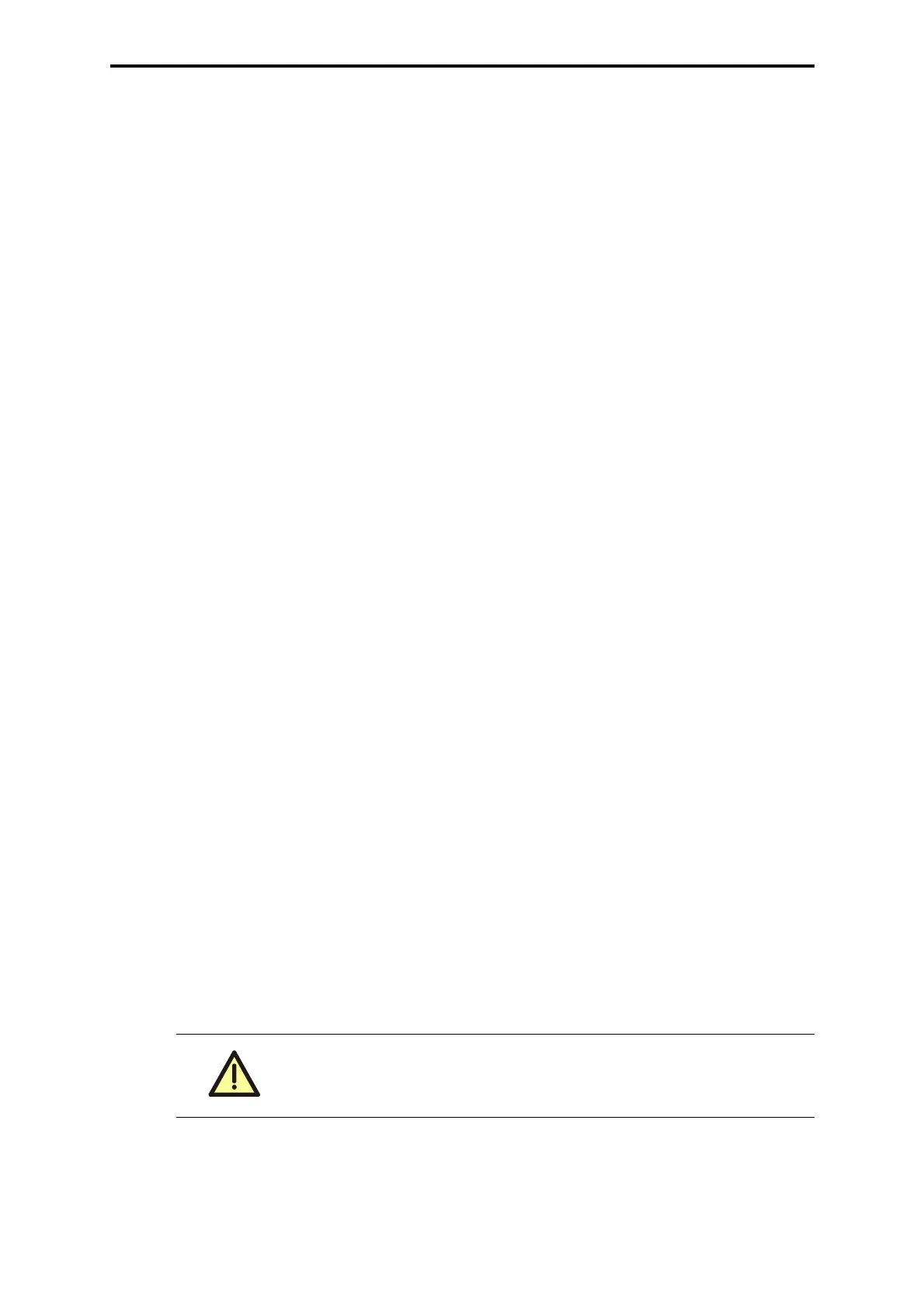F 3224A (0622)
188
1.4 Installation
• The electronic module including its connections has to be installed in a way that at least
the system of protection IP 20 according to EN 60529: 1991 + A1: 2000 is achieved.
• Two intrinsically safe input circuits of two F 3224A modules can be wired in parallel.
The reduced maximum values (C
0,L0) due to this method of connection have to be con-
sidered.
• The separation between intrinsically safe and non-intrinsically safe terminals must be
≥ 50 mm (filament dimension), especially between adjacent modules.
• The separation between adjacent intrinsically safe terminals must be
≥ 6 mm (filament
dimension.
• Intrinsically safe and not intrinsically safe lines must be installed separately, or the
intrinsically safe lines must be provided with additional insulation.
• Intrinsically safe lines must be identifiable, e.g. by a light blue color (RAL 5015) of the
insulation.
• The wiring has to be secured mechanically in a way which ensures that in the event of
an accidental disconnection, the distance (EN 50020/ Part 7, Table 4) between the
intrinsically safe and not intrinsically safe connections does not fall below the required
minimum (e.g. by bundling).
The lines used must comply with the following insulation test voltages:
• Intrinsically safe lines
≥ 1000 VAC
• Not intrinsically safe lines
≥ 1500 VAC
For stranded wires, the line ends must be provided with wire end ferrules. The terminals must
be suitable for clamping the wire cross section.
The applicable regulations and standards have to be complied with, especially:
• EN 50014: 1997 + Corrigedum: 1998 + A1: 1999 + A2: 1999
(VDE 0170/0171, Part 1: 2000, DIN EN 50014: 2000-02)
• EN 50020: 1994
(VDE 0170/0171, Part 7: 1996, DIN EN 50020: 1996-04)
• EN 60079-14: 1997
(VDE 0165 Part 1, DIN EN 60079-14: 1998-08)
1.5 System start-up
Prior to the first system start-up, an Ex-expert has to check the correct installation of the sys-
tem, especially the supply voltage connections and the connections for the intrinsically safe cir-
cuits.
1.6 Maintenance
In case of a failure, the defective module must be replaced with the same, or with another ap-
proved type.
Any repair work must only be carried out by the manufacturer!
